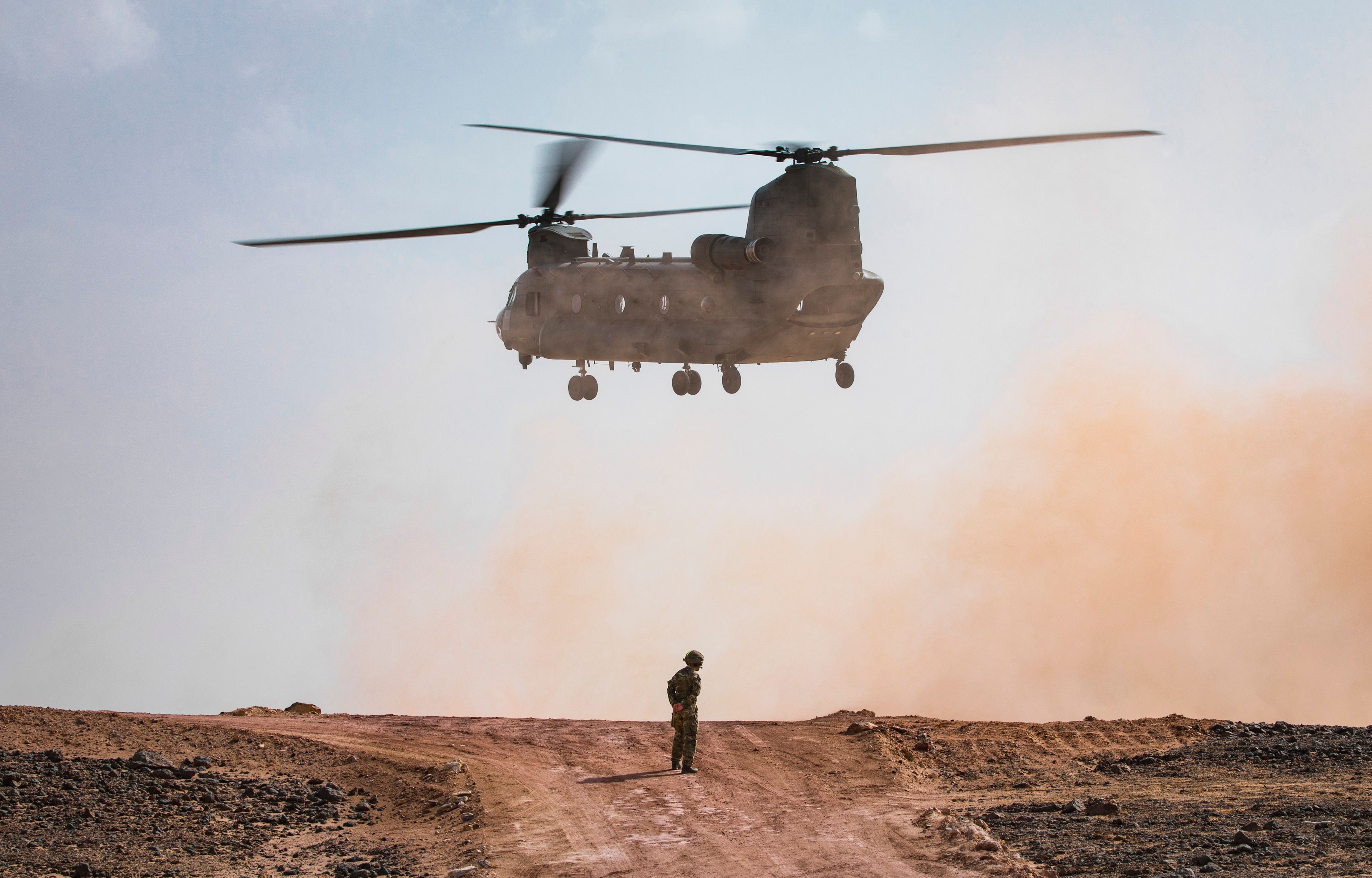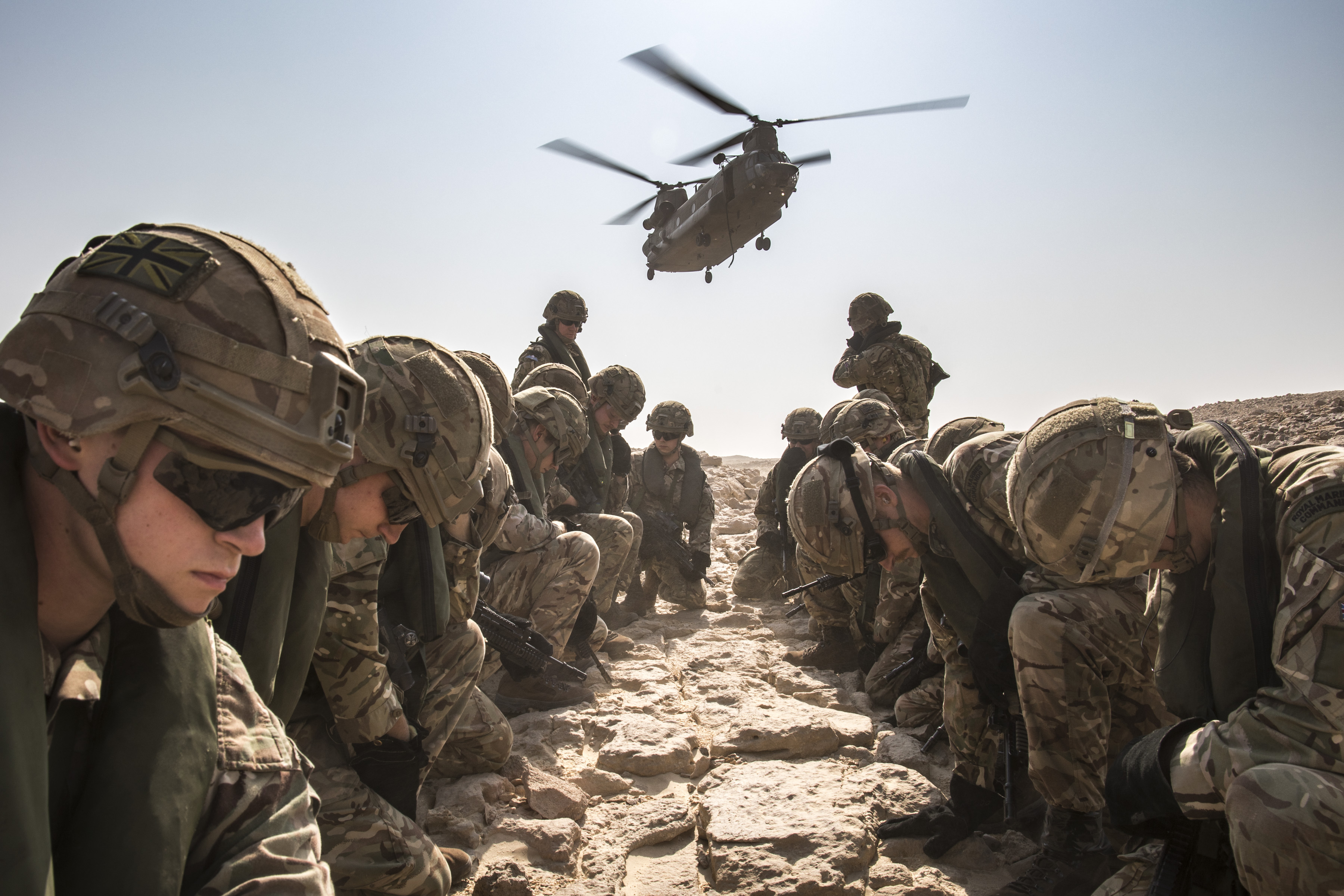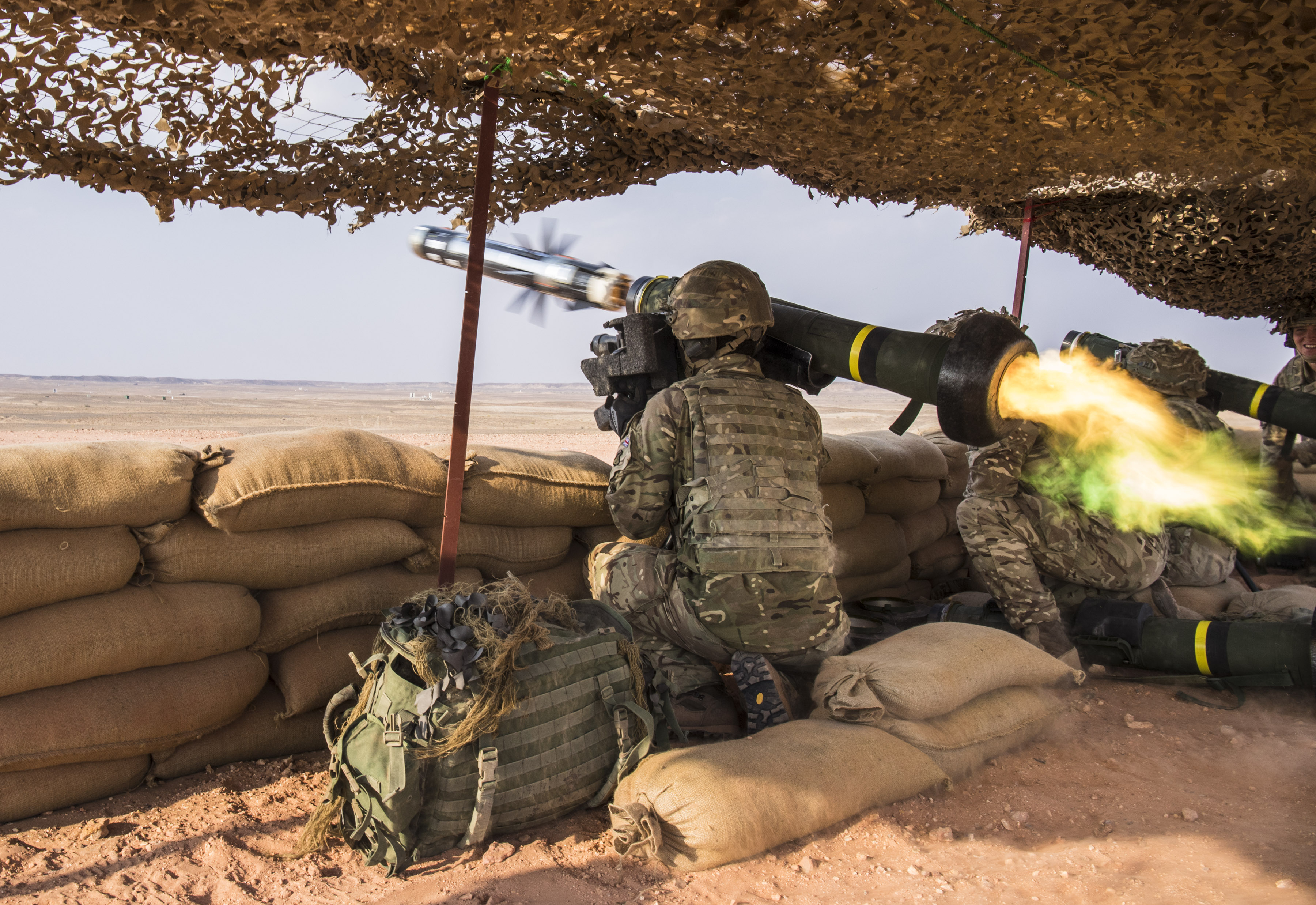Operation Saif Sareea 3
There is a blood debt between Oman and Britain. On Wednesday October 24 the Duke and Duchess of Sussex unveiled a statue in Tonga. It is of sergeant Labalaba, a towering Pacific islander. In 1972 he was on operations in Oman with the SAS, as part of the Dhofar campaign, after rebels launched an insurgency in the country’s south and began to threaten natural oil reserves. At the battle of Mirbat Labalaba took it upon himself to draw an oncoming wave of the enemy away from his overwhelmed colleagues and by singlehandedly breach loading a light gun, a piece of artillery usually manned by six people. He stayed at his post until he succumbed to his injuries, specifically a gunshot wound in his neck. The previous bullets that riddled through his torso and blew away half his jaw had not.
Oman’s stated foreign policy is to be a friend to all and enemy to none in the Middle East. A Switzerland-ish beacon of neutrality in the world’s most conflicted corner. Its hybrid interpretation of Islam means the country does not have to fall to a side of the Shia/Sunni fault line that rifts across the region and, crucially, neither of its two power blocks, Iran and Saudi Arabia.
The Sultanate of Oman sits between the two nations politically and geographically, using triangular diplomacy to better its hand. Even welcoming Prime Minister of Israel Binyamin Netanyahu on a visit, taboo in the region’s Muslim countries. Look south of its borders where a war is raging in Yemen, as the Saudis bomb Iran-backed rebels – and at least- 6,000 children. But Oman remains stable thanks to its Sultan, dictator for the last 48 years and counting. The Arab world’s longest serving leader, as well as one of the world’s.
Sultan Qaboos deposed his father in the aftermath of the Dhofar campaign, which acted as a catalyst for the country’s development. The young Sultan was a moderniser. Roads, hotels and oil wells, the latter of which pays for free education and medical care – ranked as one of the planet’s best by the World Health Organisation. Hearts and minds after the brutal civil war. Now though, in old age, despot suits better. The government controls the internet, its police can enter homes without warrant and censorship is ever-present. Not quite the same calibre as his slave-owning father who opposed opening hospitals because they may cause the country to become over-populated, but still no city on the hill.
4.2 million people live in Oman, over an area twice as large as the UK, and its population has, over the past month, increased by the 5,500 British military personnel deployed for a joint training exercise between the two nations called Saif Sareea (Swift Sword) 3. It is Britain’s biggest military deployment in the Gulf since the Iraq war and involves an additional 18 Challenger 2 tanks, two Apache gunships, eight Typhoon jets, a Type 45 Destroyer, the Royal Navy flagship HMS Albion and more.
Those numbers are still dwarfed by the last deployment to Oman, just before the invasion of Afghanistan, in 2001: 22,500 personnel, 66 Challenger 2s, two destroyers and an aircraft carrier. Although the Army’s total roster has reduced by a quarter since then. The focus this time around is on Britain’s capacity to fight in one region of the world before quickly packing up and redeploying elsewhere. Russia has simultaneously invaded eastern Ukraine whilst taking an active role in the Syrian civil war and looks increasingly to pose the biggest threat to British national security, alongside international terrorism and cyberattacks.
“It’s important that we maintain links with our friends and allies in this part of the world, because our security and national interests are aligned with theirs,” Royal Marine lieutenant colonel Paul Maynard says on the deck of RFA Lyme Bay, a civilian support ship sitting off the Omani coastline. “It’s important we sustain our ability to operate in austere, hot, arid and challenging environments. This training is absolutely essential.”
Meanwhile, the Household Cavalry, whose ceremonial duties include guarding the Queen, are hiding in the desert at the edge of the Jebel mountains. They are simulating the “enemy” in the exercise, an ISIS-like terrorist group that commands control of physical territory and has seized the Omani south, now contesting a central and resource-rich area of the country. The Scimitar reconnaissance vehicles used by the Household Cavalry are “pretending” to have the capability of a Russian T-72 battle tank and setting out in defensive formations used by the Russians. It just so happens the terrorists have inherited some T-72s and accompanying tactical handbooks, handily translated
The bear will have been paying attention to the culmination of Saif Sareea – a live fire power demonstration at the start of November. Intended to simulate a set piece desert battle. The demo was much more about impressive explosions than tactical battlegroup movements if the amount of diesel and plastic explosive stuffed into the targets was anything to go by. They were situated on a long plain, above which a viewing platform was constructed for the big names to observe from, including defence secretary Gavin Williamson, or “Gav” as every solider on the ground referred to him.
Gav met the Sultan and announced a new permanent joint training base:
“Our relationship with Oman is built on centuries of cooperation and we are cementing that long into the future with the opening of our new joint base.
We stand as a beacon of stability in the region. This has never been more important as malign activity by hostile states and violent extremist organisations seek to undermine stability and subvert the rules based order on which we all rely.”
It will be the second British base in the country in what is a stark departure from Britain’s decision after the Suez crisis to completely withdraw its military presence east of the canal. At Duqm there is now a Royal Navy base and it is of vital strategic importance.
Oman’s coastline forms the western edge of the Strait of Hormuz, a 33-mile wide bottleneck through which 40 per cent of the world’s crude oil flows. One tanker every 10 minutes. Across the strait sits Iran, brooding. After US withdrawal from the nuclear agreement, brokered in Oman, the potential for Iran to turn off the headlights by blockading the thin shipping lane worries the West.
Fortunately the port at Duqm will be capable of accommodating Britain’s new class of aircraft carrier, no other friendly base in the Gulf is deep enough to provide safe harbour. Drilling the troops, yes, fostering a relationship with the Omanis, too, projecting hard power into the Gulf, absolutely.
The British believe Oman to be one of few safe bets in a region otherwise categorised by instability and conflict. From the country they can guarantee the oil flow, as well as launch straight out into the Indian ocean. All of that being said, a succession crisis looms on the horizon. The 78-year-old Sultan Qaboos has cancer and not named a successor. An early divorce and no heir, he says there is an envelope containing his appointed preference stored in secret location the Sultan’s Al Alam palace.
“The Royal Marines fought alongside the Sultan’s forces in the Dhofar campaign, one of my predecessors personally fought in that campaign. There’s a brotherhood that flows from that fighting, the loss of life, and it is never lost,” lieutenant colonel Paul Maynard says.
That brotherhood is one way the blood debt manifests. Another is the sports facility Sultan Qaboos paid for at Cranwell, the RAF’s officer training college, that bears his name. He passed through there, and Sandhurst, and returns to watch passing out ceremonies. And finally, and perhaps most crucially, with the deep water port at Duqm.






































